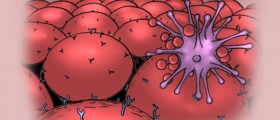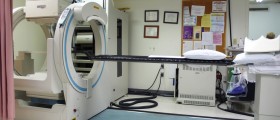
Thyroid cancer is a malignant tumor affecting the thyroid gland, growing inside of it with a tendency to spread all over the body. The progression of the disease, dissemination of cancer cells as well as other factors related to the disease basically depend on the histological type of the cancer. The treatment is also specifically designed according to the type of thyroid cancer.
Types of Thyroid Cancer and Classification
Histological characteristics of the tumor determine the specific type of thyroid cancer and they also play significant role in the future behavior of the tumor.
The main types of malignant thyroid tumors are papillary thyroid cancer, follicular thyroid cancer, medullary thyroid cancer and finally, anaplastic thyroid cancer while there are also many more subtypes of this malignant disease. Apart from cancers that typically originate from the cells of the very thyroid gland, the thyroid gland may be also affected by cancer which typically do not stem from the cells that made the gland. For instance, there are lymphomas and squamous cell carcinomas.
The most commonly reported histological type of thyroid carcinoma is papillary thyroid cancer. It affects between 75 and 85% of all patients diagnosed with this malignant tumor. The tumor predominantly develops in young women and has excellent prognosis.
Follicular thyroid cancer is confirmed in 10-20% of all patients, medullary thyroid cancer affects 5-8% of all patients while anaplastic thyroid cancer, the most aggressive type of all cancers of this gland ,is reported in less than 5% of all cases. Anaplastic carcinoma is resistant to most available treatment modalities, grows rapidly and is commonly associated with pressure symptoms. Medullary thyroid cancer may affect previously healthy individuals or develops as a part of MEN-2 (multiple endocrine neoplasia type 2).
There is a specific subtype of thyroid cancers known as papillary microcarcinoma. This is a relatively small tumor, less than 1 cm in diameter. It can be identified accidentally during ultrasound of the neck which is performed for other purposes. The tumor is either treated with total thyroidectomy or patients undergo only observation.
Differentiated cancers of the thyroid gland (papillary and follicular types) have better prognosis to less differentiated or undifferentiated types.
In the majority of cases the tumor develops in the form of a nodule in the thyroid gland in the front portion of the neck. The nodule can be palpated, or if it is large may be easily seen. Also, the entire gland may enlarge. In case of dissemination of cancer cells regional (neck) lymph nodes enlarge and form a lump. Progression of the disease is characterized by pain in the anterior part of the neck. Infiltration of the recurrent laryngeal nerve leads to hoarseness.
Treatment and Prognosis
Basically, all patients suffering from thyroid cancer in whom the tumor remains localized undergo surgical removal of the thyroid gland (mostly total thyroidectomy). After the gland is removed patients require thyroid hormone substitution for the rest of their lives. Surgery alone is sufficient enough for localized form of the disease without any signs of systemic dissemination of cancer cells. Apart from removing the entire gland, surgeons may sometimes opt for lobectomy, a surgical removal of only a portion of the thyroid gland. However, patients in whom the disease is diagnosed when the tumor has significantly grown do not undergo surgical tumor removal. Instead they undergo tracheostomy and are recommended other available treatment options.
On the other hand patients with large tumors and with high risk of recurrent disease as well as others in whom the cancer cells might have spread to lymph nodes are supposed to undergo treatment with radioactive iodine. This treatment is a highly powerful tool which efficiently tracks down thyroid cancer cells, especially in case of follicular and papillary thyroid cancer. The iodine used in such treatment does not cause damage to other cells in the body and is easily excreted via urine. This treatment is sometimes used alone and the success rate is relatively high. It may even help patients in whom the cancer gave metastases to the lungs.
Unfortunately, patients suffering from anaplastic, medullary as well as most Hurthle cell thyroid cancers simply do not respond well to radioactive iodine and, therefore, they need different treatment approach. For instance, they may benefit from postoperative external radiation therapy. Radiotherapy is also recommended in case of unresectable cancers, disease recurrence and when the tumor has spread to the bones when radiotherapy can alleviate the associated pain.
Today scientists are investigating certain agents that might be efficient in the future. The clinical trials are in their 3rd phase and we hope that soon enough these agents will be available for treatment.
And finally, as far as prognosis is concerned, it is basically connected with the type of thyroid cancer as well as the stage of the disease. The prognosis is more than good in case of papillary and follicular types while patients with anaplastic thyroid cancer typically face rapid progression of the disease. The outcome is much better in young patients than in older individuals. However even patients with more aggressive types of thyroid cancer may survive for many years.

















Your thoughts on this
Loading...